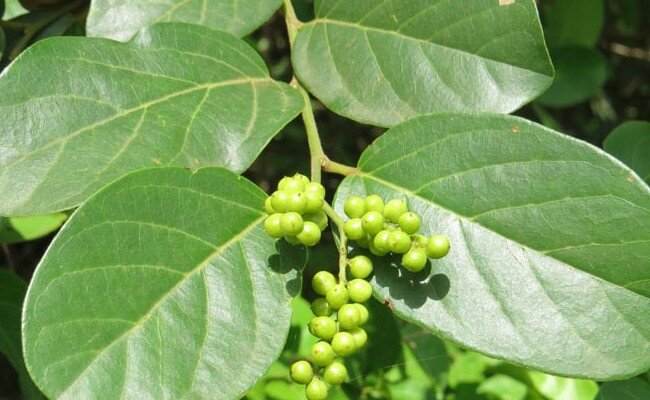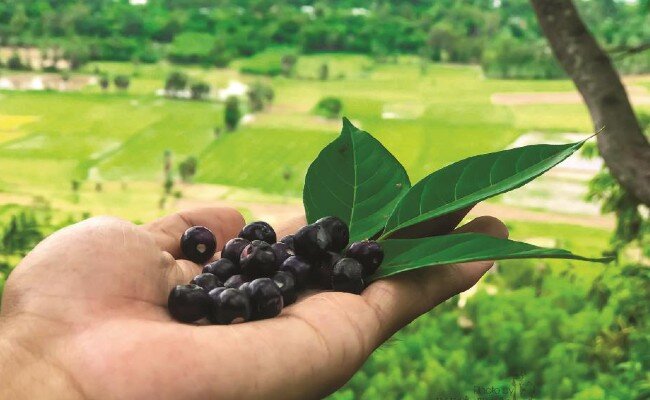The Choi Moi tree, also known as Choi Moi, is a wild plant native to the Tay Nguyen provinces of Gia Lai, Dak Lak, and Dak Nong, often found growing at the forest’s edge.

Choi Moi trees grow wild, and not only are their fruits edible, but the young leaves and shoots can also be turned into delicious and unique dishes.
The fruits of the Choi Moi tree bring back nostalgic memories of childhood for many generations. However, not many people are aware that the leaves and young shoots of this tree are also edible. The leaves are a deep green color year-round and are compound leaves resembling a goosefoot shape, with long petioles and three leaflets at each end. The leaf margins have a shallow serrated edge.
Locals share that the leaves have a sharp sour and astringent taste and are commonly used to cook sour soup, similar to La Giang leaves, or as a side dish called Rau Ghem that complements dishes like Kho Quet (a type of braised dish) or grilled fish. The leaves can also be pounded with salt to create a unique dipping sauce for seafood or grilled meat. Additionally, the young shoots of the Choi Moi tree can be boiled or stir-fried with other vegetables.

The Choi Moi leaves have a sour and slightly astringent taste and are commonly used in various dishes by the ethnic groups in Tay Nguyen.
Ms. Nga, a resident of Dak Nong, shared that Choi Moi leaves are available year-round as the tree is easy to grow and thrives in the local climate. Some people dry or dehydrate the leaves for longer preservation in airtight containers or plastic bags. When needed, the leaves can be simply rehydrated in water, regaining their original form without losing their distinctive flavor.
“In the past, Choi Moi was unknown to most people outside the local community. Only the locals would forage for these leaves to prepare certain dishes. Nowadays, restaurants and eateries seek out Choi Moi leaves to create unique dishes for their customers. They are also sold online for around VND 40,000 per kilogram,” Ms. Nga added.

Both the leaves and fruits of the Choi Moi tree have gained popularity among city dwellers in recent years.
It is worth noting that some households also cultivate Choi Moi trees for their shade or as ornamental plants. The fruits have a unique flavor profile, combining a subtle sweetness with a tangy sourness. The trees typically flower between March and June, with the fruits ripening to perfection in July.
Beyond its culinary uses, the Choi Moi tree is also recognized as a valuable medicinal herb in traditional Eastern medicine. The leaves contain high levels of antibacterial compounds, effectively inhibiting various gut and skin bacteria. According to traditional Vietnamese medicine, the plant has a range of therapeutic properties, including cooling and detoxifying effects, hemostatic and blood-activating functions, anti-inflammatory and edema-reducing actions, and more.






























